Yes we all love the delicious wines of Tuscany. For many, Tuscany is what got them into Italian wine. Whether it was dreaming of the beauty of a Tuscan villa or slurping a glass of Chianti with pizza, most folks that are familiar with Italian wine know a thing or two about Tuscany. But what about the other regions that comprise Central Italy – Lazio (home of Rome), Marche, and Umbria?1 These regions offer a plethora of exciting native varieties, distinctive terroir, and newly committed producers. What’s more, central Italy wines offer delicious wines at incredible values.
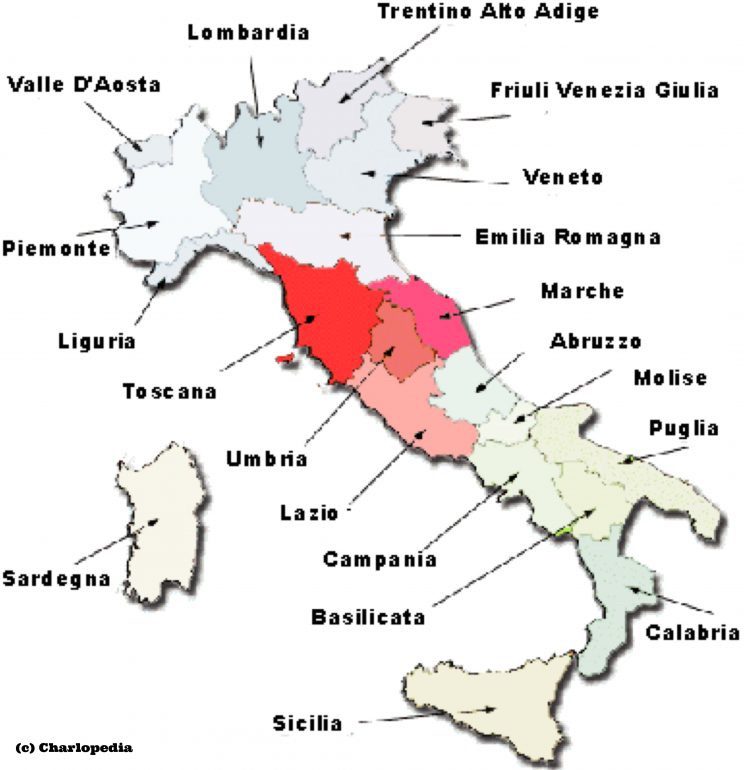
MARCHE
Situated on the lovely Adriatic Sea, Marche is regarded as “classic Italy” because they have maintained a thoughtful balance of rural and urban areas throughout the region. The region produces both red and white DOC and DOCG wines. Notable red wines are made from Montepulciano (including the bold Rosso Conero) and Sangiovese. And while notable whites are crafted from Pecorino and Passerina, it’s Verdicchio that really shines here.
The name Verdicchio is derived from the term “verde” due to its greenish-yellow hue. This indigenous variety can be made in dry, sparkling, and sweet styles with wines that offer up complexity and ageability. It often exhibits lovely minerality and high levels of acidity from the white calcareous soils found in the region. The dry versions are crisp and clean and can work as an aperitif but are also great paired with food due to its mouthwatering acidity. If you are a fan of Sancerre (Sauvignon Blanc), you will appreciate Verdicchio.
There are two DOCG zones for Verdicchio – Verdicchio dei Castelli di Jesi and Verdicchio di Matelica Riserva. And even with these quality wine designations, the wines are affordable and offer a great QPR. If you’re looking to try the wines of the region, the wines of Garofoli is a great place to start.
Garofoli Wine
Garofoli is the oldest family-owned winery in Marche and today is run by the family’s fifth generation. They are widely considered to be a benchmark producer of exceptional, terroir-driven Verdicchio as they were one of the first to reduce yields, study different clones of the grape, and experiment with various vindication vessels all with the intent to make complex and age worthy wines. Further, their continual focus on Verdicchio has allowed them to exemplify the best characteristics of the grape. Two of their wines were sent to me to sample. And even though they are made from the same variety, they are very different wines.
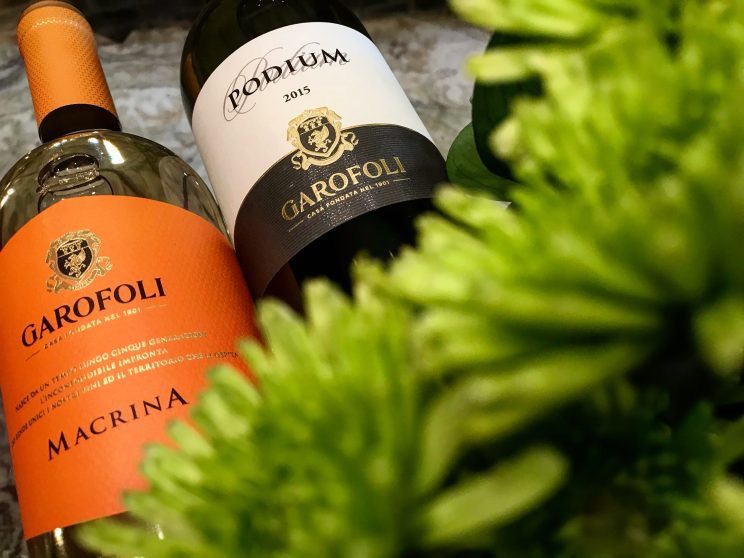
2017 “Macrina” Verdicchio dei Castelli di Jesi DOC Classico Superiore, Marche, Italy ($14)
The Macrina wine is comprised of 100% Verdicchio. It showed a pale lemon with a greenish hue in the glass. Nice tropical fruit on the nose (honeydew and peach) along with green apple and a bit of floral essence. On the palate, there almost a tingly effervescence to it along with lemon-lime, salinity, bright minerality as well as the hallmark acidity. We had this one with fried flounder and it was fantastic. High acid wines love fried, salty food. But it would also play well with other preparations of seafood including grilled seafood as well as light pasta.
2015 “Podium” Verdicchio dei Castelli di Jesi DOCG Classico Superiore, Marche, Italy ($25)
Also crafted of 100% Verdicchio, this is the family’s single-vineyard flagship wine. In fact, this is one of Italy’s most lauded and awarded wines.2 The wine is fermented and aged in stainless steel and spends eight months on the lees. It showed a pale lemon green in the glass but was a bit deeper in color than the Macrina. And while it’s not as aromatic as the Macrina, it had more body and roundness. Honeyed and toast aromas lead to a palate of sharp acidity with notes of lemon, green pear, and almond. Like the Macrina it would pair well with seafood but would also go nicely with risotto and herbed roasted chicken. I had it with lobster mac n cheese. Très magnifique!
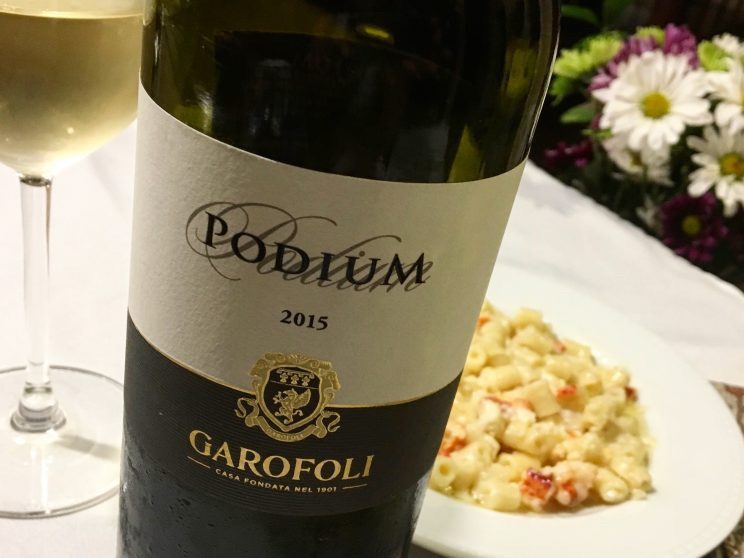
UMBRIA
Located in central Italy, Umbria is bordered by Tuscany to the west and Marches to the east. And while its landscape and climate is similar to that of Tuscany, it is a bit hotter and drier due to the fact that it is landlocked and doesn’t receive the maritime influence that Tuscany does. Also, having Tuscany as a neighbor often means that the region is overshadowed.
Umbria’s best known white wine is its Orvieto DOC which is made with Trebbiano and Grechetto. Umbria is also home to two DOCG red wines – Sagrantino di Montefalco, which is made from the tannic, thick-skinned Sagrantino grape and Torgiano Rosso Riserva, which is made with a minimum of 70% Sangiovese. But of course, that just barely scratches the surface as the region offers a wide array of varieties, styles, and price points. Terre Margaritelli is one of the region’s most renowned producers.
Terre Margaritelli
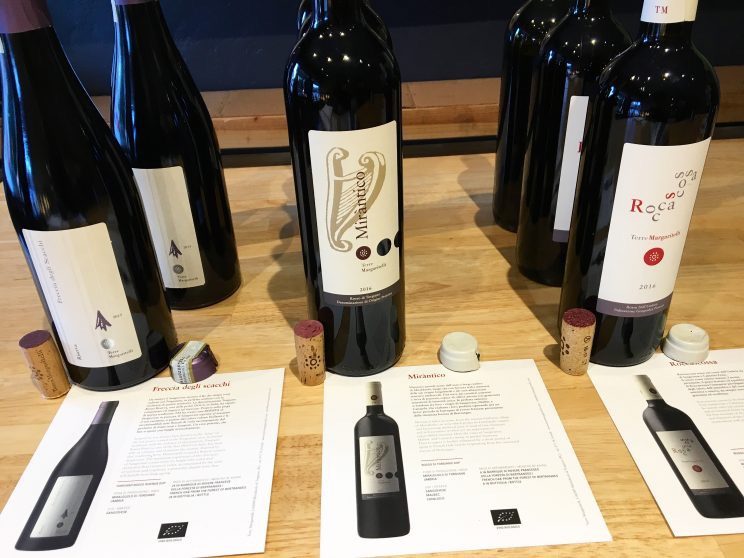
Right in the heart of Umbria, Terre Margaritelli is located between Perugia and Assisi in the famous wine area of Torgiano, which is a small hill town that sits about 650 feet above sea level. As sustainability is at the heart of what they do, Margaritelli’s entire production is certified organic. While Trebbiano and Grechetto are the primary whites and Sangiovese and Canaiolo are the primary red varieties grown, the estate produces 14 different varieties. The result are wines that are elegant, reflective of terroir and most importantly, approachable. To learn more about Umbria and the wines of Terre Margaritelli, check out my in depth look here.
2016 Roccascossa Rosso Dell’Umbria ($10)
An intense, deep ruby in the glass, the Roccascossa was a lovely red comprised of Sangiovese and Cabernet Franc. While the Cabernet Franc was apparent on the nose (a bit of the green, vegetal aromas), the palate was unmistakable Sangiovese with its freshness and hallmark high acidity. Fresh cherry, spice, and a bit of earth. Well balanced and quite enjoyable.
2016 Miràntico Rosso di Torgiano ($10)
The Miràntico, a Rossi di Torgiano DOC wine, is a blend of the Sangiovese, Malbec, and Canajolo and is a beautifully made. Each variety does its part enhance the resulting blend with the Sangiovese adding sharp and acidic qualities, the Canajolo offering up a tinge of bitterness and structure, and the Malbec bringing it all together by adding some smoothness and sweet ripe fruit. Geranium, cherry blossoms, and a hint of black pepper. A quite elegant wine with a lengthy finish that spent 6 months in French oak.
2013 Freccia degli Scacchi Torgiano Rosso Riserva ($20)
Named after the captain of the generals of the Battle of Miralduolo, the Freccia degli Scacchi is comprised of 100% Sangiovese. Like neighboring Tuscany, Sangiovese does very well in Umbria, where it is the most produced variety. This Torgiano Rosso Riserva is a DOCG – one of the first in Italy – and was aged 24 months in French oak and 24 months in the bottle. The grapes are sourced from higher elevation areas in Torgiano which contributes to the intense flavors and high acidity. This one is a brilliant ruby color in the glass with the the hallmark floral aromas (roses and violets) for which Sangiovese is known along with red cherry fruit and a bit of leather and cocoa.
LAZIO
Located along the Mediterranean south of Tuscany and Umbria and home of the capital Rome, Lazio (also called Latium in Latin) is one of Italy’s most ancient winemaking regions. The region is primarily known for its dry white wines made from the Trebbiano and Malvasia grapes in a fresh, unoaked style. The wines tend to be medium bodied with high acidity. Like many regions that once suffered from a poor reputation, recent investments and a dedication to producing quality wines have lead to renewed excitement in making wines in Lazio today. Two of the more well known wines from the region include Frascati DOC and Est! Est! Est! di Montefiascone DOC.
If Rome has a signature wine, it’s probably Frascati, which Romans refer to as the Golden Wine, both for its rich golden color as well as its great value. Its also been referred to as the wine of the popes. Frascati must be made with a minimum of 50% Malvasia with the remaining blend consisting of Trebbiano, Bellone, and Bombino amongst other local varieties. But it an be a bit of a chameleon as the other grapes in the blend add varying characteristics to the flavor profile.
The story (legend) behind the naming of Est! Est! Est! di Montefiascone DOC is a bit humorous. Back in the 12th century, a bishop was traveling to Rome to meet with the Pope and sent his servant out ahead to search for the best places for wine and food along the route. If the servant found good wine, he was to mark the place with “Est!” (Latin for “it is”). When he got to Montefiascone, the wine was so good that he marked the place with “Est! Est! Est!” and the name stuck. The region is known for its volcanic soils which produce fresh, crisp wines. Est! is made with up to 65% Trebbiano with the rest made up of Malvasion and Trebbiano Gaillo.
2016 Bellini Frascati DOC, Lazio, Italy ($10)
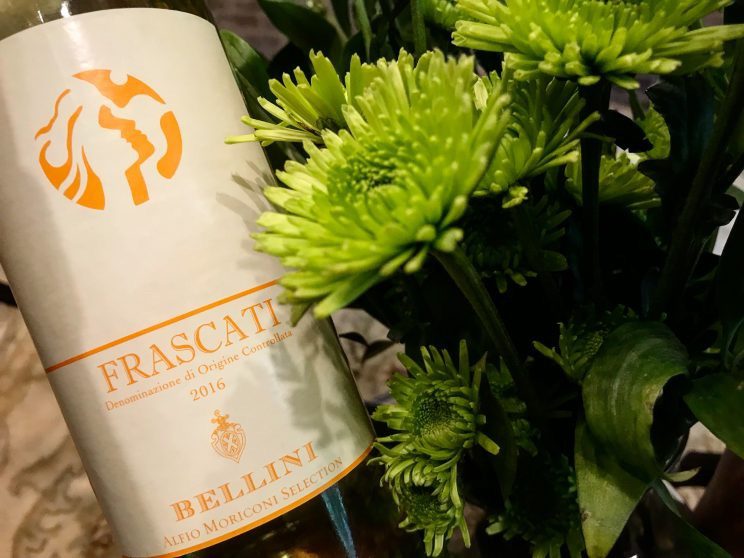
The Bellini was a pale, greenish yellow in the glass. Crafted of 80% Malvasia, 10% Bombino Bianco, and 10% Bellone (gotta love those indigenous Italian varieties) it is fresh, crisp, and light bodied. The nose offers up notes of melon, citrus zest, pineapple, and green apple. On the palate, the wine is medium bodied and has a nice balance of fruit and acid. With its lower alcohol level, this one is great as an aperitif for a hot summer evening. Hello pool! But also pair with shellfish, salads, and light pasta dishes.
2016 Pietro Est! Est! Est! di Montefiascone DOC, Lazio, Italy ($10)
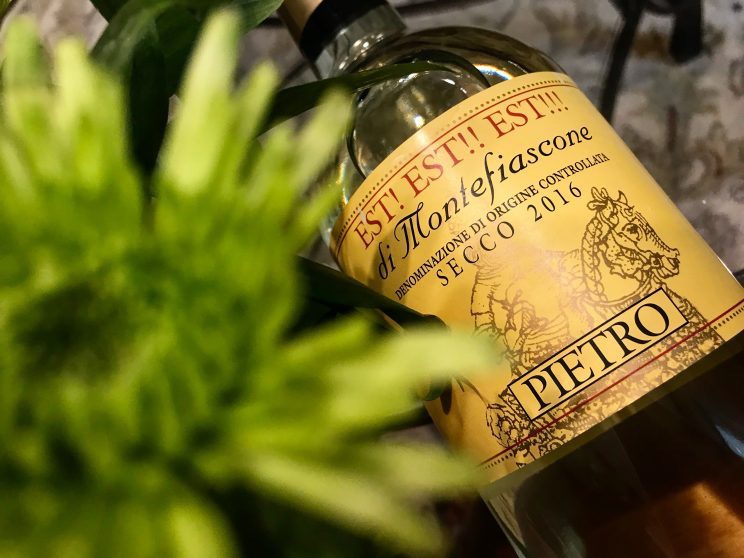
This is solid, easy drinker (almost too easy!) with aromas of citrus, tropical fruit, and honeysuckle. Dry with vibrant acidity, it has flavors of honey, citrus, apple and almond, as well as a bit of minerality. Quite quaffable on its own but I’ve heard that this pairs well with fried artichokes. I didn’t get to test this pairing so some additional research in definitely in order for me!
With the diversity of wines from Marche, Umbria, and Lazio, not to mention their absolute affordability, I can’t think of a better time to seek out the wines from these regions. Now go out and pick up some Central Italy wines. Your palate and your wallet will thank you!

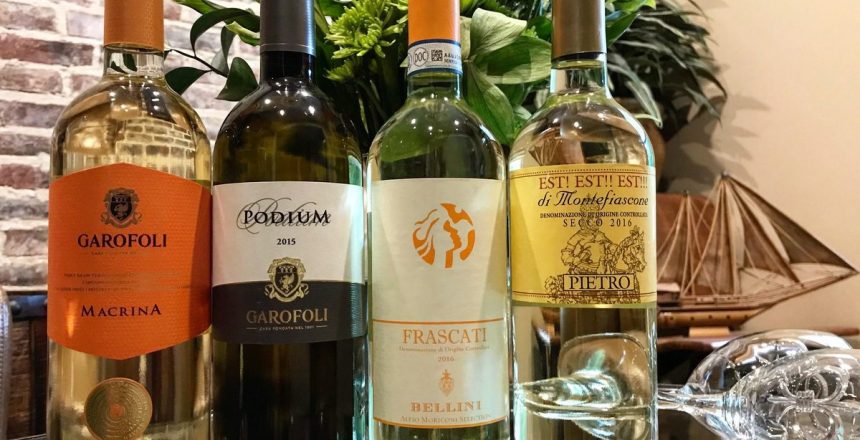
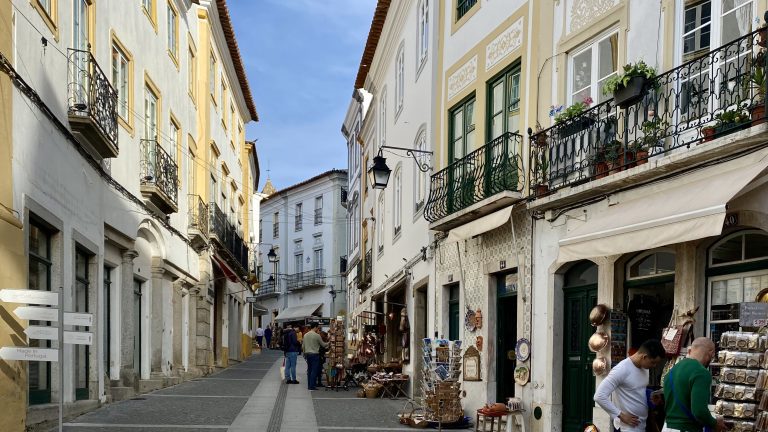



No Comments